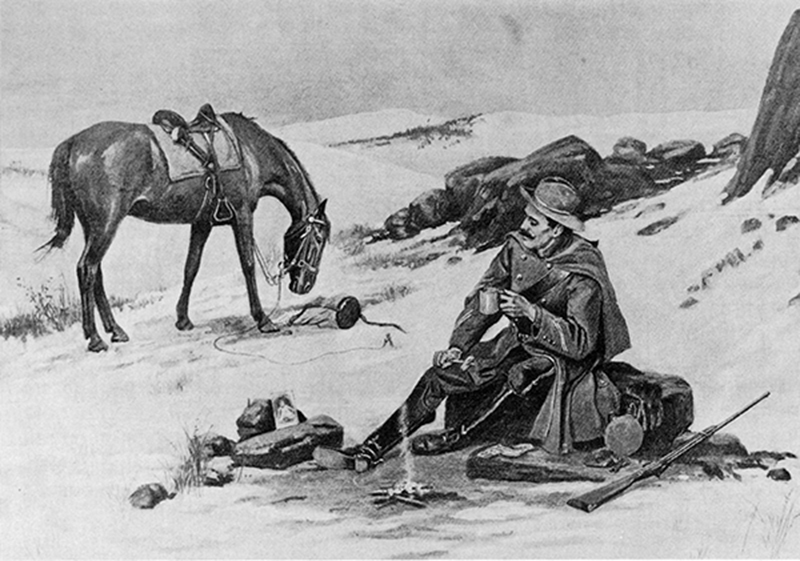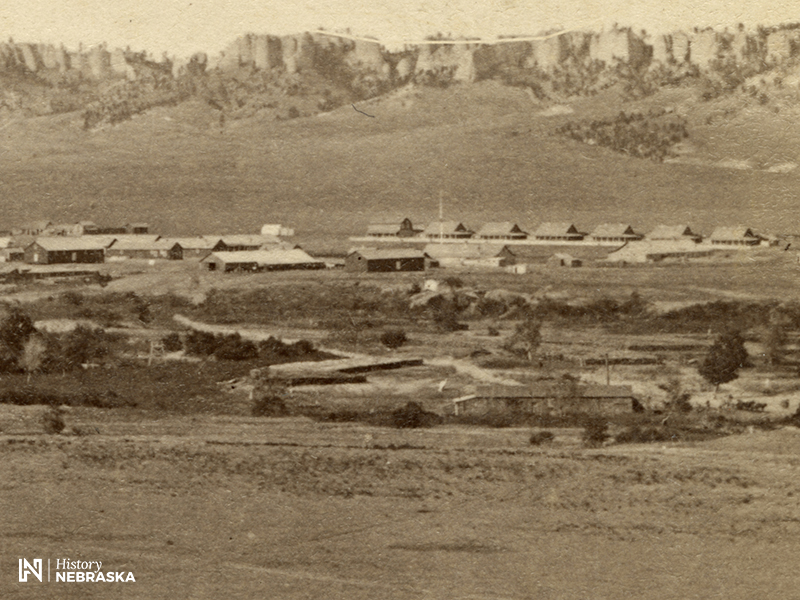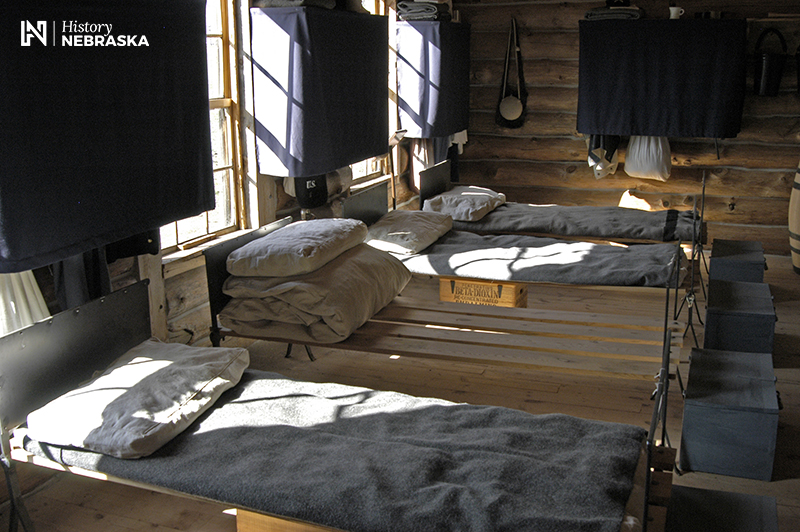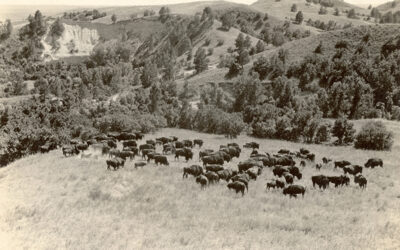
Lithograph of frontier soldier sitting by campfire in snow, with horse nearby
Martin Weber never forgot the year he traveled through a blizzard to bring Christmas packages to Fort Robinson. In 1934 the old soldier described his 1882 adventure in a letter to a veterans’ newspaper called Winners of the West.
In 1882 much of today’s Fort Robinson State Historical Park had yet to be built, and many of the original log buildings still remained. It was still very much a frontier outpost. Weber, a corporal, was ordered to take a driver and six-mule team to Fort Sidney—the nearest railroad depot—to pick up the Christmas goods for Fort Robinson. He writes:
“We started about December 10, a six days’ journey. The weather was ideal, clear, sunny days and we arrived at Ft. Sidney on time but were delayed two days owing to the non-arrival of the goods that was coming over the Union Pacific Railroad. They finally arrived the morning of the 18th. We loaded our wagon at once and pulled out for Ft. Robinson 125 miles to the North.

Fort Robinson was still known as Camp Robinson when this photo was taken in 1877. The view is from the south. History Nebraska RG5899-3-1
“The weather had turned cold and frost began to fly through the air indicating a storm. The next morning the storm broke in all its fury, a regular blizzard raging. We had to head into the storm. We made Camp Clarke where the Sidney-Black Hills Trail crossed the North Platte River” at present-day Bridgeport.
“The storm had increased during the night… The bridge tender and his wife advised us to stay until the storm should pass as they did not think we could travel in such a blizzard. As much as we disliked to leave the snug quarters and hot meals (we were to enjoy for the next three days only a ration of frozen bread and bacon), we bid them goodbye and headed into the storm. Without shelter or fire, three days and two nights, when we thot that each day would be our last, we traveled over an open country for about fifty miles and had to break trail all the way, it being 30 to 40 degrees below zero.
“The mules were going home, was the only reason we were able to make them face the blizzard. We had plenty of corn and oats for mules and the horses and at night we tied them so the wagon would act as a wind break and covered them with blanket lined covers. We would spread our tent on the snow, roll our bed and pull part of the tent over us and let the storm howl.
“We got to the Running Water stage station the night of the 23rd. Here we had hay for mules and horses and a warm place to cook our supper. How good that hot coffee tasted….”

Reconstructed log barracks at Fort Robinson. A bed like this would look pretty good after sleeping in the snow.
Braced by more hot coffee, they started out early the next morning for the last twenty miles. The “storm had passed, the sky cleared” and they arrived at the Fort on Christmas Eve.
“When I passed the officers’ quarters, the kiddies were all out running up and down the walks. When they saw me, they began to shout, ‘The Christmas wagon has come!’ Hearing them the officers and men came out. They could hardly believe it until the teamster drove his six weary mules up and we began to unload the Christmas goods. Even the officers were willing to help.
“So old Santa arrived, and there was a Merry Christmas after all had given up hope of seeing either. I was snow blind and had to wear dark glasses for some time after that.”



